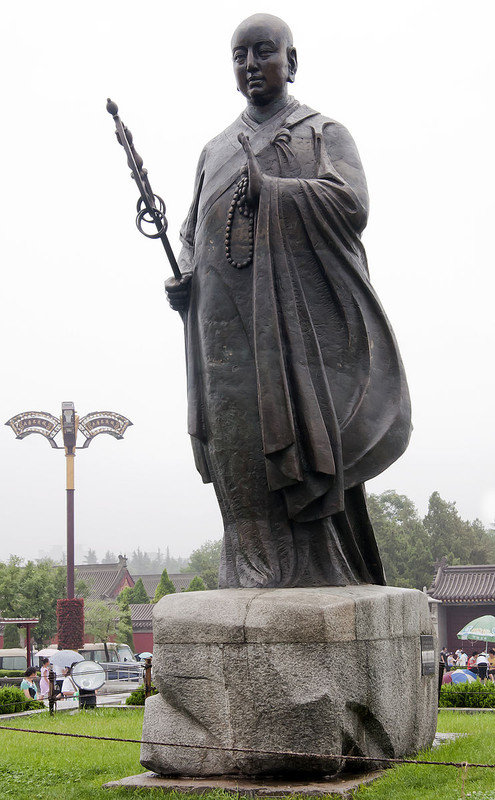Xuanzang
View FullscreenHis Life and His (Heavily Abridged) Travels

To traverse the routes of the Silk Roads is, even today, an incredible task. These roads, while well-trod and efficient, are replete with challenges. If it’s not the challenging terrain and rough living conditions, it’s the threat of the living things that lurk around you.
However, the benefits of what this odyssey can offer to travelers often outweighs the dangers. Wealth, riches, and even bragging rights drove multitudes of people to endeavor on this courageous journey. But for the Chinese monk Xuanzang, it was his devotion to a higher truth that compelled him.
He travelled around China and India in the early 7th century in efforts to experience the roots of Buddhism in the land where it was born. His travels served to further Sino-Indian relations and also helped to solidify the importance of Buddhism in China. Along the way, he was witness to a number of important architectural sites in Asia.1
Xuanzang was born in sometime around 600 C.E. under the Sui dynasty.2 Eighteen years later, the Tang Dynasty was established—the regime under which he would spend the remainder of his life. From an early age, Xuanzang was dedicated to his beliefs in Buddhist teaching and at the age of 20 he became ordained as a monk.3
During the Tang, Chinese culture became increasingly self-involved as culture and political stability reached an apex. Xuanzang looked outward however. As a devout Buddhist, he took great interest in India, seeing a pilgrimage there as a way of showing his devotion to his faith.
In his mid-twenties, he chose to make this pilgrimage. However, this choice was met with backlash from the government. At the time, the emperor of the country had enacted a piece of legislation that forbade any foreign travel unless it was approved by the highest reaches of the government.4 Xuanzang ignored this ruling hoping that an unendorsed pilgrimage would illustrate the authenticity of his motivations. So, in 629 Xuanzang illegally departed from the capital city of Chang’an with an assistant and a meager sum of supplies.5
His travels to India and back took nearly three decades and took him through some of the most scenic, spiritual, and spectacular parts of Asia. His stops included, but were not limited to the cities of Chang’an, Liangzhou, Turfan, Kucha, Samarkand, Bamyan, Ajanta, Nasik, Kanchipuram, Tamralipta, Pataliputra, Sarnath, Mathura, Kashgar, Khotan, Niya, Luolan, and Dunhuang.7
This titanic voyage is not only significant because of its spiritual significance, or its political connection of China and India. It also serves as a tour of significant architectural styles and locations throughout the heart of Asia.
For the purposes of this study, we will be looking only at Chang’an and its metropolitan layout, Kucha's Kizil Caves, Bamyan and the Bamyan Buddhas, Nasik's Bhaja caves, Tamralipti, Pataliputra's Nalanda Monastery, and the Mogao Caves in Dunhuang.
Neatline serves as an effective means by which to tell the story of Xuanzang. His travels develop a comprehensive collection of stand-out structures and sites. These span both swaths of time and geographical distance so a combination of distance and temporal tracks help to illustrate the nuances of Xuanzang’s journey.
- Tansen Sen, “The Travel Records of Chinese Pilgrims Faxian, Xuanzang, and Yijing,” Asia for Educators, Columbia University, Created Winter, 2006, http://afe.easia.columbia.edu/special/travel_records.pdf .
- “The Travel Records of Chinese Pilgrims,” Asia for Educators.
- “The Travel Records of Chinese Pilgrims,” Asia for Educators.
- Frances Wood, The Silk Road (Berkely and Los Angeles: University of California Press, 2002), 102.
- Wriggins, Sally Hovey, The Silk Road Journey with Xuanzang (ACLS Humanities E-Book, Westview Press, 2004), 11, https://login.libproxy.scu.edu/login?url=http://search.ebscohost.com/login.aspx?direct=true&db=edsacl&AN=edsacl.heb31253&site=eds-live.